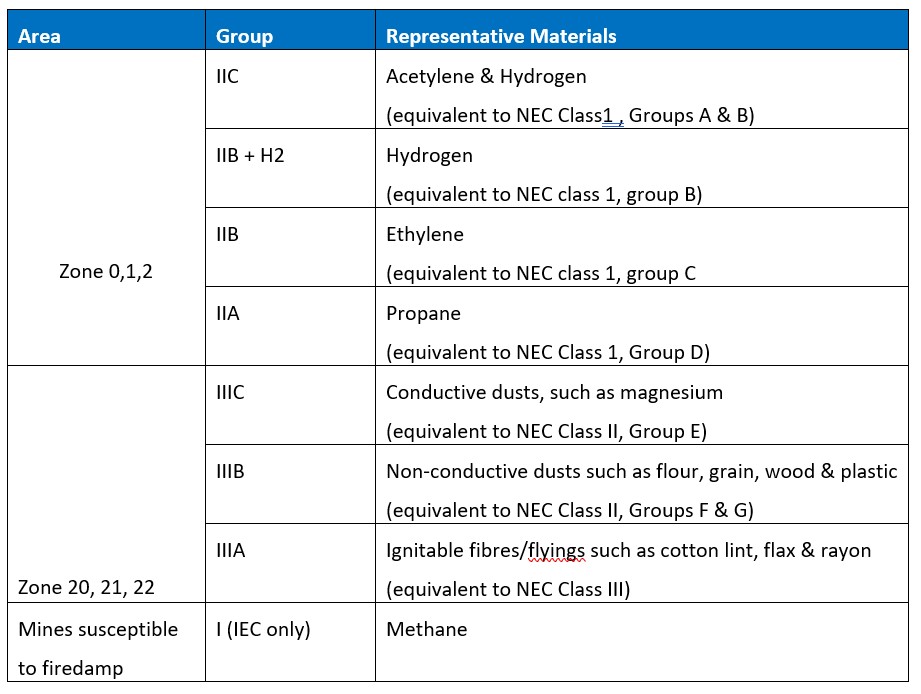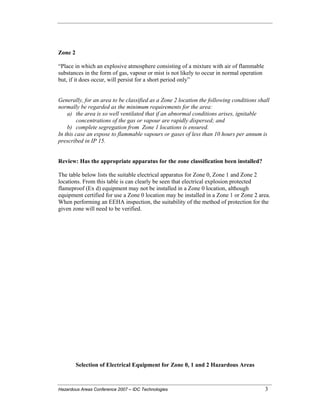The Greatest Guide To Roar Solutions
The Greatest Guide To Roar Solutions
Blog Article
The Greatest Guide To Roar Solutions
Table of ContentsThings about Roar SolutionsSome Known Factual Statements About Roar Solutions Roar Solutions for Beginners
In order to safeguard installations from a potential explosion an approach of evaluating and classifying a possibly unsafe area is needed. The purpose of this is to make sure the right option and installment of tools to ultimately avoid a surge and to ensure safety and security of life.
(https://www.magcloud.com/user/roarsolutions)
No equipment ought to be set up where the surface temperature level of the devices is better than the ignition temperature level of the given danger. Below are some usual dust hazardous and their minimum ignition temperature level. Coal Dirt 380C 225C Polythene 420C (melts) Methyl Cellulose 420C 320C Starch 460C 435C Flour 490C 340C Sugar 490C 460C Grain Dust 510C 300C Phenolic Resin 530C > 450C Aluminium 590C > 450C PVC 700C > 450C Residue 810C 570C The likelihood of the hazard being existing in a concentration high sufficient to create an ignition will certainly differ from place to area.
Harmful area electric devices possibly made for use in greater ambient temperature levels. Field Fixing By Authorised Employee: Complicated screening might not be needed nonetheless certain procedures might need to be adhered to in order for the devices to keep its 3rd event rating. Each piece of equipment with an unsafe rating should be evaluated independently.
What Does Roar Solutions Mean?
The tools register is a thorough database of equipment records that includes a minimum set of fields to identify each product's area, technical parameters, Ex-spouse classification, age, and ecological information. This information is important for monitoring and taking care of the tools properly within unsafe areas. On the other hand, for routine or RBI tasting examinations, the quality will certainly be a combination of Thorough and Close inspections. The proportion of Comprehensive to Close inspections will be established by the Devices Risk, which is analyzed based upon ignition threat (the chance of a resource of ignition versus the chance of a combustible environment )and the hazardous area classification
( Zone 0, 1, or 2). This variant will certainly additionally affect the resourcing needs for work prep work. When Great deals are specified, you can develop sampling plans based on the example size of each Great deal, which refers to the number of random equipment items to be checked. To figure out the needed sample dimension, 2 facets need to be evaluated: the size of the Lot and the group of inspection, which shows the level of initiative that must be applied( reduced, typical, or increased )to the evaluation of the Great deal. By incorporating the category of assessment with the Great deal size, you can after that develop the appropriate being rejected requirements for a sample, meaning the allowable number of faulty products located within that sample. For more details on this procedure, please describe the Power Institute Guidelines. The IEC 60079 typical advises that the optimum interval in between inspections need to not exceed 3 years. EEHA inspections will also be carried out beyond RBI campaigns as part of scheduled maintenance and tools overhauls or repairs. These assessments can be credited toward the RBI sample sizes within the impacted Whole lots. EEHA assessments are conducted to recognize faults in electrical tools. A weighted scoring system is important, as a single tool may have several mistakes, each with varying levels of ignition risk. If the consolidated score of both evaluations is less than two times the fault score, the Whole lot is deemed appropriate. If the Lot is still considered unacceptable, it must go through a full assessment or justification, which might activate stricter evaluation procedures. Accepted Lot: The root causes of any type of faults are identified. If a common failure mode is located, extra equipment may need maintenance. Faults are classified by extent( Security, Honesty, Housekeeping ), ensuring that immediate issues are examined and resolved quickly to alleviate any effect on safety and security or operations. The EEHA data source need to track and videotape the lifecycle of faults together with the restorative activities taken. Executing a durable Risk-Based Examination( RBI )strategy is essential for making sure compliance and safety in taking care of Electrical Devices in Hazardous Locations( EEHA) (Roar Training Solutions). Automated Mistake Scoring and Lifecycle Management: Easily handle faults and track their lifecycle to boost examination precision. The introduction of this support for risk-based examination even more enhances Inspectivity's setting as a best-in-class solution for regulative conformity, in addition to for any type of asset-centric evaluation usage case. If you are interested in finding out more, we welcome you to request a demo and discover just how our solution can transform your EEHA management procedures.
6 Simple Techniques For Roar Solutions

In regards to eruptive threat, a harmful location is an environment in which an eruptive ambience is present (or may be expected to be existing) in quantities that call for unique precautions for the building, setup and use tools. eeha. In this write-up we explore the challenges faced in the work environment, the danger control actions, and the called for competencies to function safely
These compounds can, in particular conditions, create explosive environments and these can have major and terrible repercussions. Many of us are acquainted with the fire triangle get rid of any Learn More Here kind of one of the three aspects and the fire can not take place, however what does this mean in the context of dangerous locations?
In many instances, we can do little about the degrees of oxygen airborne, yet we can have considerable influence on sources of ignition, for example electric devices. Hazardous areas are documented on the harmful area category drawing and are identified on-site by the triangular "EX LOVER" sign. Below, among various other essential information, zones are split into 3 types relying on the threat, the possibility and duration that an eruptive ambience will certainly exist; Area 0 or 20 is considered the most hazardous and Area 2 or 22 is regarded the least.
Report this page